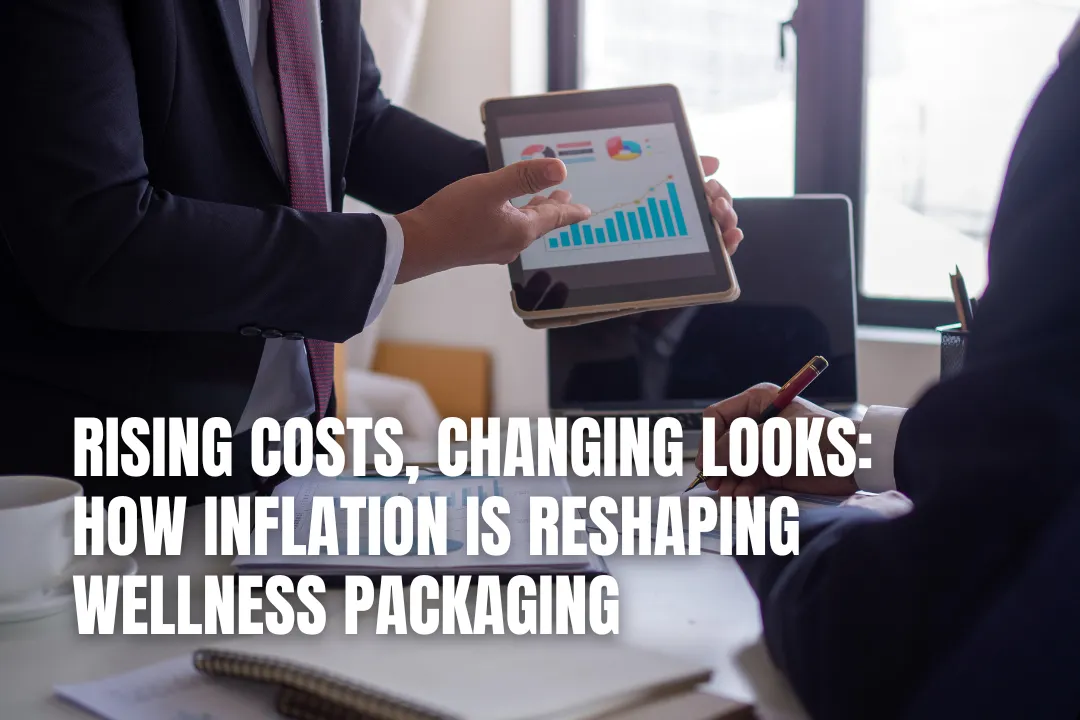
Editorial Disclaimer
This content is published for general information and editorial purposes only. It does not constitute financial, investment, or legal advice, nor should it be relied upon as such. Any mention of companies, platforms, or services does not imply endorsement or recommendation. We are not affiliated with, nor do we accept responsibility for, any third-party entities referenced. Financial markets and company circumstances can change rapidly. Readers should perform their own independent research and seek professional advice before making any financial or investment decisions.
Inflation is affecting industries across the board, and the wellness sector is no exception. From protein powders to herbal teas, brands are making visible adjustments to how their products are presented. Packaging has always been a core part of brand identity, but with production costs climbing, companies are rethinking material choices, design approaches, and even the size of their packaging to balance aesthetics with affordability. These changes are not only influencing what consumers see on store shelves, but also how they perceive value and quality in wellness products.

Rising costs for raw materials have prompted many wellness brands to explore alternative packaging options. Paper-based pouches, recycled plastics, and compostable films are becoming more common, partially due to their lower price points and growing consumer preference for sustainable solutions. While some premium packaging materials remain in use for high-end products, mid-range and entry-level wellness goods are increasingly shifting to simpler, lighter, and more cost-effective formats. The goal is to preserve functionality while keeping price increases modest enough to maintain customer loyalty.
Inflation is also influencing design priorities. Brands that once favoured intricate printing methods and elaborate finishes are simplifying their visuals to cut expenses without sacrificing recognition. This often means fewer ink colours, smaller print runs, and more reliance on universal packaging that can be adapted for multiple product lines. For example, rather than producing separate containers for each product flavour, companies might standardise one design and differentiate items with stickers or custom labels for food packaging. This strategy reduces production complexity and allows for quicker adaptation to cost changes.
Shrinkflation, or reducing product quantity while keeping prices steady, has made its way into the wellness sector. While consumers may notice smaller containers, strategic packaging design can soften the impact. Slimmer bottles, resealable pouches, and compact jars help maintain visual appeal while discreetly lowering material usage. Some brands use the shift as an opportunity to highlight freshness and portion control, reframing smaller sizes as a benefit rather than a drawback. Clear communication on packaging about these changes can help maintain consumer trust and reduce potential backlash.
Sustainability remains a driving factor in wellness product packaging, but inflation complicates the balance between eco-friendly choices and profitability. Recycled materials may still be prioritised, yet their rising costs require brands to think creatively. Lightweight designs, reduced ink usage, and minimalist branding can achieve both environmental and economic goals. This dual focus appeals to consumers who want responsible products but are also feeling the pressure of higher prices in their daily lives.
As inflation continues to influence supply chain costs and consumer spending habits, wellness brands are learning to adapt quickly. Packaging decisions are becoming a critical part of strategic planning, affecting both brand perception and bottom-line performance. Those that can maintain visual appeal, communicate value, and remain cost-conscious are more likely to retain customer trust in an increasingly price-sensitive market. To learn more, look over the accompanying resource below.
.webp)
The primary reason is inflation. Rising costs for raw materials and production are pushing wellness brands to find more affordable packaging. This helps them avoid passing the full price increase onto you, the customer.
You might notice more products in paper-based pouches, recycled plastics, and compostable films. These materials are often more cost-effective and appeal to the growing consumer demand for sustainable options.
Many companies are simplifying their designs. This can mean using fewer ink colours or adopting standardised containers that are then customised with specific labels for different products, which reduces overall production complexity and expense.
Yes, it is. Some brands are reducing the amount of product in a package while keeping the price stable. They often use strategic design, like slimmer bottles or compact jars, to maintain the product's visual appeal on the shelf.
Not completely. They are working to find a middle ground. By choosing lightweight designs, using less ink, and incorporating recycled materials where possible, brands can manage costs while still appealing to shoppers who value environmentally responsible products.
Inflation is affecting industries across the board, and the wellness sector is no exception. From protein powders to herbal teas, brands are making visible adjustments to how their products are presented. Packaging has always been a core part of brand identity, but with production costs climbing, companies are rethinking material choices, design approaches, and even the size of their packaging to balance aesthetics with affordability. These changes are not only influencing what consumers see on store shelves, but also how they perceive value and quality in wellness products.